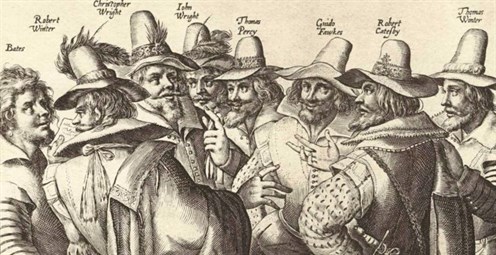.
Amongst all the devastation and destruction of the Great Fire of 1743, there was at least one surprising survival. The battered remains of a felt hat were found some years ago in the “daub wall” of a “wool-washing shed” at 6, St Lawrence Green. Curators at the Royal Albert Memorial Museum (RAMM), Exeter, have identified it as probably dating from the 16th or 17th century – long before the Great Fire. They believe it was deliberately concealed in the wall : there are several known examples of hats and other felt objects being hidden in that way. The general assumption is that concealing something like this might be a superstitious act to bring good luck or to ward off evil spirits.1
We know that all the houses along that side of the Green were destroyed in the fire. So why does this hat survive?
There are lots of examples of clothing being handed down / modified / re-purposed in bygone days. But it would be a stretch of the imagination to assume that this hat might still have been in use in the 1740s and put in the wall some time AFTER the Great Fire – say, 150 years or more after it was made.
We don’t know EXACTLY where the hat was found. The “wool-washing shed” may have been an outhouse at some distance behind the main house; perhaps the shed escaped destruction in the Great Fire?
We do know that when some of the cob buildings were destroyed in the Great Fire, the cob walls remained standing while the wood and thatch burnt. Perhaps this hat was concealed deep inside a wall which remained unaltered until modern times?

The remains of the hat – now very fragile – are held at RAMM. Their research suggests that it was probably a style known as a “capotain” hat – similar to those in this famous image of the Gunpowder Plotters (1605).
Who might have made it? The earliest reference to a hatter in Crediton comes from 1626, when Henry Peake, a beaver maker of London, died in Crediton at the home of William Bolte.2 A “beaver maker” could have made hats in felted beaver or rabbit fur – or sheep’s wool. The Crediton hat appears to have been made in a mixture of rabbit fur and sheep’s wool. Even so, this would have been an expensive object, no doubt made for a wealthy customer.
Henry Peake bequeathed his “truncke” and its contents to William Bolte, who might also have followed the same profession.3
A man named William Bolte, along with his wife Mary, were involved in a dispute regarding a “mansion house” on St Lawrence Green in the 1620s.4 The Crediton parish register shows the birth of William Bolt in 1576 and the marriage of William Bolt to Mary Brock in 1601. In 1691, Daniel Ivie (Lord of the Manor of Crediton) leased the market to Robert Bolt.5 In the 18th century, “Robert Bolt, Mercer” held property on the northern side of St Lawrence Green, mentioned in a deed of 1718 and shown on the 1743 map.6 “Thomas Bolt, mercer of Crediton” is mentioned in a court case of 1727.7
So we have a 16th or 17th century hat found concealed in the fabric of a building on St Lawrence Green; and the death of a hatter in 1626 at the house of a man who had connections to property on St Lawrence Green in the 1620s. Coincidence, perhaps? Or perhaps not?
Tony Gale, 2023